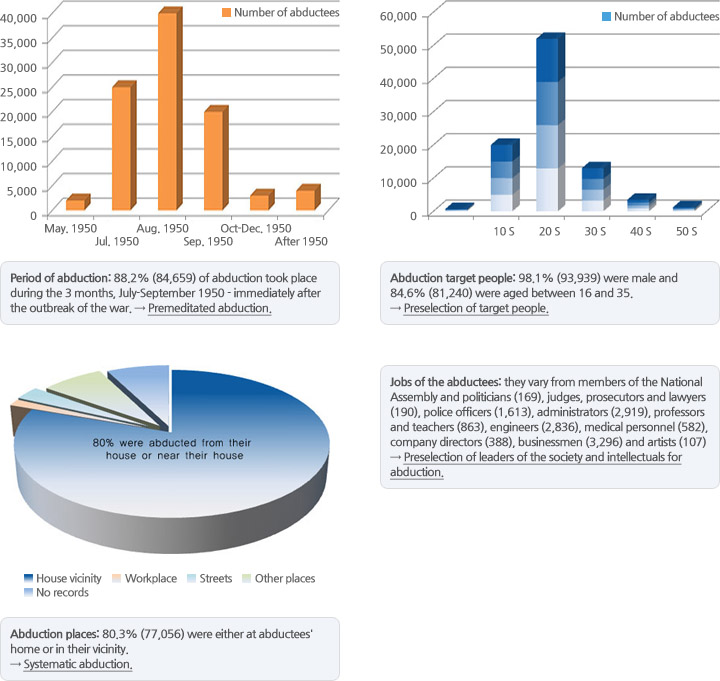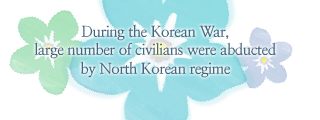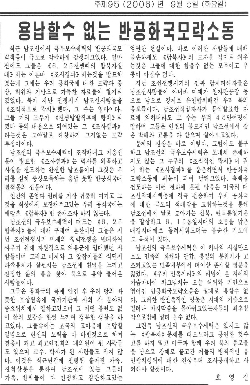
'Statistical Analysis on the Korean War Abductees' Kim Myung-ho, Professor at Gangnung University
Five different kinds of the Korean War Abductee lists found by KWAFU
(a) ¡¸List of Seoul area victims¡¹prepared by the government Office of Public Information on December 1, 1950 (the first of its kind, listing 4,616 missing people including 2,438 abductees)(b) ¡¸The Korean War abductee list¡¹prepared by the Korean War Abductees' Family Association (KWAFA, predecessor of KWAFU) in 1951. listing 2,316 abductees
(c) ¡¸The Korean War abductee list¡¹prepared by the Korean government in 1952, listing 82,959 (the first nation-wide list)
(d) ¡¸The Korean War abductee list¡¹prepared by the Korean National Police Headquarters in 1954, listing 17,940 (excluded single young men)
(e) ¡¸Registration list of displaced civilians¡¹ The Korean Red Cross list prepared in 1956 for the armistice talks, containing 7,034 abductees with the information provided by abductee family members to receive information from North Korea on the fate of abductees. The Korean Red Cross took two months to receive reports beginning on June 15, 1956, and it used the terminology "Displaced Civilians" instead of "Abductees."
Any duplication In number was excluded from these five lists, to arrive at factual number of the abductees, 96.013. An analysis of the lists is as follows:





















 FAX : (82)31-930-6099
FAX : (82)31-930-6099
